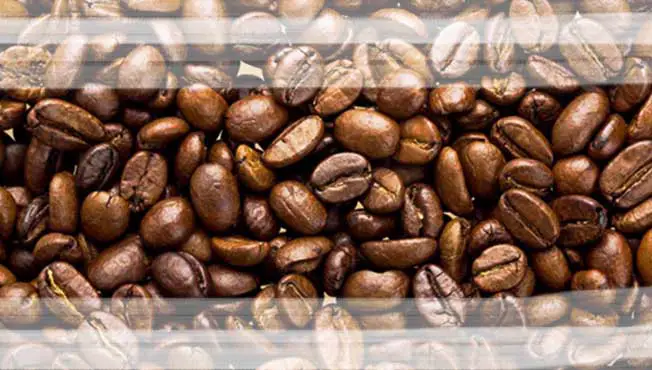Coffee is one of the world’s most beloved beverages, and it comes in various forms, each with its own unique characteristics. Two primary coffee species, Arabica (Coffea arabica) and Robusta (Coffea canephora), are at the heart of the coffee world. They differ not only in taste but also in the regions where they are grown, the processing methods they undergo, and their economic significance. In this comprehensive guide, we will delve into the distinctive qualities of Arabica and Robusta coffee, explore the countries that produce them, and shed light on the processes involved in cultivating these beans. By the end of this article, you’ll have a better understanding of the differences between these coffee varieties, helping you make an informed choice the next time you reach for a cup of your favorite brew.
Arabica vs Robusta Coffee Health Benefits
The Arabica Advantage
Arabica coffee, often regarded as the “queen of coffee,” is favored by coffee connoisseurs worldwide. Here’s why:
Flavor Profile

Arabica coffee beans are celebrated for their complex flavor profiles, which can include notes of fruits, berries, nuts, and even floral undertones. The taste of Arabica coffee is often described as smoother, milder, and less bitter than its counterpart, Robusta.
Acidity

Arabica coffee typically boasts a higher level of acidity, which contributes to its bright and vibrant flavor. This acidity is often likened to the acidity found in wine, offering a delightful and nuanced taste experience.
Aroma
The aroma of Arabica coffee is captivating, with a rich, enticing scent that can vary based on the bean’s origin. Coffee enthusiasts appreciate the way the aroma of Arabica beans can evoke images of tropical paradises, lush forests, and diverse landscapes.

Caffeine Content

Arabica coffee contains less caffeine than Robusta, making it the preferred choice for those who are sensitive to caffeine or looking for a mellower coffee experience. An average cup of Arabica coffee contains about 1.2% caffeine content, compared to Robusta’s 2.2%.
The Resilient Robusta
Robusta coffee is known for its robust nature and distinct characteristics that set it apart from Arabica. Here’s what you need to know about Robusta coffee:
Flavor Profile

Robusta coffee, often considered more robust and bold, has a stronger, earthier, and more bitter taste compared to Arabica. The flavor can include notes of nuts, chocolate, and even a woody or rubbery undertone.
Caffeine Content

Robusta coffee is caffeine-rich, containing about twice as much caffeine as Arabica. The high caffeine content provides an energizing jolt, making it a popular choice for espresso blends and instant coffee.
Versatility
Due to its bold flavor and high caffeine content, Robusta coffee is often used in espresso blends to add depth and a thick crema. It is also a preferred choice for instant coffee production because of its lower cost and shelf stability.

Arabica vs Robusta Coffee Growing Regions
Coffee cultivation is highly dependent on geographical factors, including climate, altitude, and soil conditions. Arabica and Robusta beans thrive in distinct regions around the world, each contributing its unique flavor to the global coffee spectrum.
Arabica’s Homeland

Arabica coffee is native to the high-altitude regions of Ethiopia, particularly in areas such as Sidamo, Yirgacheffe, and Guji. These regions provide the ideal conditions for growing Arabica coffee, with elevations ranging from 1,500 to 2,100 meters above sea level. The moderate temperatures and ample rainfall in these regions create the perfect environment for these delicate beans to flourish.
Arabica’s Global Presence
While Arabica coffee originated in Ethiopia, it has spread far and wide across the globe. Here are some key regions known for producing exceptional Arabica beans:
- Latin America: Countries such as Colombia, Brazil, and Costa Rica are renowned for their high-quality Arabica coffee. The mountainous terrains and unique microclimates in these regions result in diverse flavor profiles, attracting coffee aficionados from around the world.
- Africa: Apart from its native Ethiopia, countries like Kenya and Tanzania are notable Arabica producers. The coffee grown here often exhibits bright acidity and floral notes.
- Asia: In regions like India, Arabica beans are cultivated at high elevations in the Western Ghats, yielding coffee with a distinct profile. The coffee from this part of the world is treasured for its rich aroma and complex taste.
Robusta’s Dominance

Robusta coffee, on the other hand, has its own set of ideal growing conditions and regions:
Africa and Southeast Asia
Robusta coffee finds its roots in the central and western parts of sub-Saharan Africa, where it is still a significant contributor to the local economies. The Robusta beans grown in these regions are known for their bold and earthy flavors.
In recent decades, Southeast Asian countries like Vietnam and Indonesia have become major players in Robusta coffee production. These nations benefit from favorable climates and have embraced Robusta cultivation for its economic benefits. The coffee produced here is often used in blends and instant coffee products.
Arabica vs Robusta Coffee Processing
The journey of coffee beans from the plant to your cup involves several steps, with two primary processing methods for coffee: “washed” and “natural.” These methods significantly impact the flavor and characteristics of the coffee.

Washed Process
- Arabica Preference: The washed process is commonly associated with Arabica coffee. In this method, the cherries are pulped to remove the outer skin and mucilage, followed by fermentation and washing to separate the beans from any remaining residue. This process often results in cleaner, more acidic, and nuanced flavors.
- Mildness and Clarity: The washed process is favored for its ability to highlight the intrinsic qualities of Arabica coffee beans. It’s often chosen to bring out the mildness, clarity, and distinct notes that Arabica is known for.
Natural Process
- Robusta Utilization: Robusta coffee is frequently processed using the natural method. In this approach, ripe cherries are dried in the sun, allowing the beans to absorb some of the fruit’s flavors. This results in a more robust and earthy taste profile.
- Boldness and Richness: The natural process enhances the boldness of Robusta beans, contributing to the strong and intense flavors that many coffee lovers prefer.
The Verdict
So, is one better than the other, or is it simply a matter of personal preference? The answer lies in your individual taste and what you seek in your daily cup of coffee. Both Arabica and Robusta have their unique qualities that appeal to different coffee enthusiasts.
- Arabica is known for its complexity, bright acidity, and a wide range of flavors. It’s often favored for its smooth and mild taste, making it a great choice for those who appreciate nuanced coffee experiences.
- Robusta is celebrated for its boldness, high caffeine content, and intense flavors. It’s commonly used in espresso blends and instant coffee for its ability to provide a strong and energizing kick.
In the world of coffee, there’s no absolute “better” choice. It’s all about what satisfies your palate and suits your coffee rituals. Whether you prefer the elegance of Arabica or the robustness of Robusta, the world of coffee offers something for everyone.
In the next part of this article, we’ll address the common misconceptions surrounding Starbucks coffee and explore the reasons why some people enjoy Robusta coffee. Stay tuned for a deeper dive into the world of coffee preferences and choices.
Starbucks Coffee: Arabica or Robusta?

One of the questions that often comes up in coffee discussions is, “What type of coffee does Starbucks serve?” Starbucks, one of the world’s most famous coffee chains, primarily uses Arabica beans in its coffee blends. The company takes great pride in its coffee sourcing and uses a variety of Arabica beans from different regions to create its signature coffee offerings.
Starbucks often focuses on single-origin coffees, highlighting the distinct flavors of various Arabica bean varieties from locations worldwide. This commitment to Arabica beans aligns with Starbucks’ goal of delivering a consistent and premium coffee experience to its customers.
However, Starbucks also offers some Blonde Roast options, which are lighter in flavor and have a milder taste. These Blonde Roasts may contain a higher proportion of milder Arabica beans, which are more similar to traditional American coffee profiles.
That said, Starbucks has not shied away from experimenting with coffee and has introduced some robust and bold coffee options, which may include a blend of both Arabica and Robusta beans. These blends are designed to cater to different taste preferences and are used in various espresso-based drinks like lattes and cappuccinos.
Why Do People Drink Robusta Coffee?

Robusta coffee often gets a bad rap for its strong, earthy flavors and higher caffeine content. However, there are reasons why people choose Robusta coffee:
- Boldness and Energy: Robusta’s intense taste and high caffeine content make it an excellent choice for those who need a strong and energetic kick in the morning. It’s often favored by individuals who prefer a bolder, more robust coffee.
- Affordability: Robusta coffee is typically less expensive to produce than Arabica, making it a budget-friendly option for coffee lovers. Its lower cost is why it’s often used in instant coffee products.
- Espresso and Blends: Robusta is an integral component of many espresso blends. It helps create a thick crema and adds body to espresso shots. This makes Robusta an essential ingredient in many espresso-based beverages.
- Cultural and Regional Preferences: In some parts of the world, particularly in areas where Robusta is grown, it’s deeply ingrained in the local coffee culture. People develop a taste for it, appreciating its unique qualities.
It’s important to note that the preference for Arabica or Robusta coffee can vary widely from person to person, depending on individual taste, cultural background, and regional traditions.
A Journey Beyond Coffee

While our focus here is coffee, the principle of research applies to virtually any product or service. Whether you’re shopping for electronics, clothing, household goods, or even planning a vacation, doing your homework pays off.
Research equips you with the knowledge needed to make wise choices, ensures you invest in products that align with your preferences, and ultimately saves you from buyer’s remorse. It’s a practice that can enhance your overall shopping experience and lead you to products that genuinely resonate with you.
So, as you embark on your coffee journey, don’t forget the value of research. It’s not just about finding the best coffee beans; it’s about making the most of every purchase, enriching your life, and supporting the businesses and practices that matter to you.
In the next section, we’ll explore some common myths and misconceptions about Arabica and Robusta coffee, providing you with the clarity you need to make an informed choice.
Arabica vs Robusta Coffee: Debunking Common Myths about Coffee

In the realm of coffee, as with many other products, myths and misconceptions often circulate. Let’s take a moment to debunk some of the common myths and set the record straight about Arabica and Robusta coffee.
Myth 1: “Arabica Is Always Better Than Robusta”
While it’s true that Arabica is celebrated for its nuanced flavors and mild characteristics, it doesn’t mean Robusta is inferior. The choice between Arabica and Robusta should align with your personal taste preferences. Robusta’s bold and robust qualities can be just as enjoyable to those who prefer a stronger, more intense cup of coffee.
Myth 2: “Robusta Coffee Lacks Quality”
Robusta coffee often gets a bad reputation for being overly bitter and low in quality. However, when processed and brewed correctly, Robusta beans can offer a unique and satisfying coffee experience. Many high-quality espresso blends incorporate Robusta to enhance the crema and body of the coffee.
Myth 3: “All Arabica Coffee Tastes the Same”
Arabica coffee can taste vastly different depending on its origin, processing method, and roast level. The flavor profiles of Arabica beans from Ethiopia, Colombia, and Brazil, for instance, are diverse and can range from fruity and floral to nutty and chocolatey. The world of Arabica coffee is incredibly rich and varied.
Myth 4: “Robusta Coffee Is Always Harsh and Bitter”
Robusta coffee’s strong and earthy flavor is often associated with harsh bitterness. However, the bitterness can be balanced and even appreciated by those who enjoy a robust cup of coffee. The taste of Robusta coffee can be enhanced by skilled roasting and brewing methods.
Myth 5: “Price Equals Quality”
It’s a common belief that higher-priced coffee is always better. While price can be an indicator of quality, it’s not the only factor. A hefty price tag doesn’t guarantee a coffee that suits your taste. Research and personal taste should be the ultimate guiding factors in your choice.
Myth 5: “Price Equals Quality”
Coffee flavor is influenced by many variables, including the brewing method, grind size, water temperature, and extraction time. The same coffee bean can taste remarkably different when brewed as a pour-over, espresso, or French press. Experimenting with brewing techniques can lead to delightful discoveries.
By debunking these myths, we aim to highlight the diversity and complexity of the coffee world, encouraging you to explore and appreciate the distinctive qualities of both Arabica and Robusta. Remember, your coffee journey is a personal one, and your preferences should guide your choices.
In the next section, we’ll offer practical tips for enhancing your coffee experience, from selecting the best beans to brewing techniques and serving suggestions.
Crafting the Perfect Cup: Tips for a Remarkable Coffee Experience

Whether you’re an avid coffee enthusiast or just embarking on your coffee journey, there are several ways to elevate your coffee experience. From selecting the best beans to mastering brewing techniques and serving suggestions, here are some practical tips to ensure every cup of coffee is a delightful one.
1. Choose High-Quality Beans
The foundation of a great cup of coffee starts with selecting the right beans. Opt for freshly roasted coffee beans from reputable sources. Whether you prefer Arabica, Robusta, or a blend of the two, ensure the beans are of high quality, freshly roasted, and stored properly.
2. Grind Fresh
Invest in a good coffee grinder and grind your beans just before brewing. This preserves the freshness and aroma of the coffee, as ground coffee can quickly lose its flavor.
3. Water Matters
Use clean, filtered water at the right temperature. Water that is too hot can result in over-extraction and bitterness, while water that is too cool can lead to under-extraction and weak coffee. The ideal temperature is around 195-205°F (90-96°C).
4. Measure Your Coffee and Water
Use a kitchen scale to measure your coffee and water. This ensures consistency in your brewing and helps you adjust your coffee-to-water ratio based on your taste preferences.
5. Experiment with Brewing Methods
Explore different brewing methods to find the one that suits your taste. Whether it’s pour-over, French press, espresso, or Aeropress, each method brings out different characteristics in the coffee.
6. Understand the Grind Size
Different brewing methods require different grind sizes. For instance, espresso demands a fine grind, while French press needs a coarser grind. Match the grind size to your chosen brewing method for the best results.
7. Control the Brew Time
Pay attention to the brew time. Over-brewing can lead to bitterness, while under-brewing results in a weak cup. Experiment with the extraction time to find your sweet spot.
8. Serve with Care
Use clean, pre-warmed cups or mugs to preserve the coffee’s temperature and aroma. Avoid reheating coffee, as it can alter the taste.
9. Explore Flavor Enhancements
While black coffee is a classic, don’t be afraid to explore flavor enhancements like milk, cream, sugar, or alternative milk options to customize your coffee to your liking.
10. Savor the Experience
Finally, take the time to savor your coffee. Engage your senses by inhaling the aroma, appreciating the flavor, and enjoying the moment. Coffee is more than just a drink; it’s an experience to be savored.
By implementing these tips, you can make the most of your coffee selections, whether you opt for Arabica, Robusta, or any other variety. Remember that your coffee journey is a personal one, and the joy is in the exploration.
In the final section, we’ll sum up the key takeaways from our exploration of Arabica and Robusta coffee, encouraging readers to embrace the world of coffee with open arms.
Arabica vs Robusta Coffee Flavor: A Flavorful Journey Awaits
As we near the end of our exploration into the world of Arabica and Robusta coffee, it’s important to recognize that coffee is not just a beverage; it’s a cultural experience, a journey, and an art. Whether you prefer the smooth elegance of Arabica or the bold richness of Robusta, coffee has the power to connect people, evoke emotions, and offer a sensory adventure like no other.
Key Takeaways
Here are some key takeaways to keep in mind:
- Diverse Flavors: The world of coffee is incredibly diverse. Arabica and Robusta are just two pieces of this flavorful puzzle, with each offering unique taste profiles. Your preferences should guide your choices.
- The Importance of Research: Whether you’re choosing coffee beans, a new gadget, or planning a vacation, research is your ally. Informed choices lead to satisfaction and help support practices and brands that resonate with you.
- Coffee Myths: Don’t be swayed by common myths about coffee. Taste is subjective, and there’s no one-size-fits-all answer. Explore, experiment, and trust your palate.
- Brewing Perfection: Crafting the perfect cup of coffee is an art. From selecting high-quality beans to understanding brewing methods, each step contributes to a memorable coffee experience.
Brewing Perfection: Why Research Matters Before Sipping Your Coffee
When it comes to the world of coffee, there’s a delightful treasure trove of options to explore. While we’ve discussed the nuances of Arabica and Robusta coffee beans, it’s equally important to understand the significance of research before making your selection. This practice doesn’t apply only to coffee but extends to any product you intend to buy. Let’s dive into why this is a critical step to ensure satisfaction and make the most of your purchase.
The Art of Informed Choices
In our fast-paced digital age, information is at your fingertips, making research more accessible than ever. Before investing in Arabica or Robusta coffee beans, or any product for that matter, it’s essential to consider the following:
- Quality Assurance: Researching your product helps you identify reputable brands and suppliers, ensuring you receive a quality product. In the world of coffee, this means experiencing the true flavors and aromas that the beans have to offer.
- Taste Preferences: Knowing your taste preferences is crucial. Understanding the flavor profiles of Arabica and Robusta coffee, as we’ve discussed, enables you to align your choice with your personal palate.
- Budget Considerations: Researching various options allows you to make informed decisions based on your budget. You can find the best value for your money, ensuring both quality and affordability.
- Ethical and Sustainable Choices: Research can uncover information about a product’s origins, ethical practices, and sustainability efforts. By supporting responsible brands and practices, you can make a positive impact with your purchase.
- Customer Reviews: Online platforms offer a wealth of reviews and insights from other consumers. Learning from the experiences of others can help you avoid potential pitfalls and ensure your satisfaction.
A Journey Beyond Coffee
While our focus here is coffee, the principle of research applies to virtually any product or service. Whether you’re shopping for electronics, clothing, household goods, or even planning a vacation, doing your homework pays off.
Research equips you with the knowledge needed to make wise choices, ensures you invest in products that align with your preferences, and ultimately saves you from buyer’s remorse. It’s a practice that can enhance your overall shopping experience and lead you to products that genuinely resonate with you.
So, as you embark on your coffee journey, don’t forget the value of research. It’s not just about finding the best coffee beans; it’s about making the most of every purchase, enriching your life, and supporting the businesses and practices that matter to you.
The Bottom Line
In the world of coffee, there’s no clear winner between Arabica and Robusta. Each variety has its distinct qualities, and the choice ultimately depends on what you desire in your daily coffee experience. Whether it’s the smooth, nuanced flavors of Arabica or the bold and robust profile of Robusta, the coffee world has something to offer every palate.
So, the next time you sip your coffee, take a moment to savor the unique qualities of the beans that brewed it. And remember, there’s a vast and diverse coffee world out there, waiting to be explored, one cup at a time.
In conclusion, the Arabica vs. Robusta debate is a matter of personal preference, with both types of coffee offering a wide range of flavors and characteristics. Understanding the differences between them, as well as their origins and processing methods, can help you make informed choices and explore the rich tapestry of coffee options available to you.
Thank you for reading our comprehensive guide to Arabica vs. Robusta coffee. If you have any questions or would like to learn more about specific aspects of coffee, feel free to reach out. Happy brewing!
Related content:

